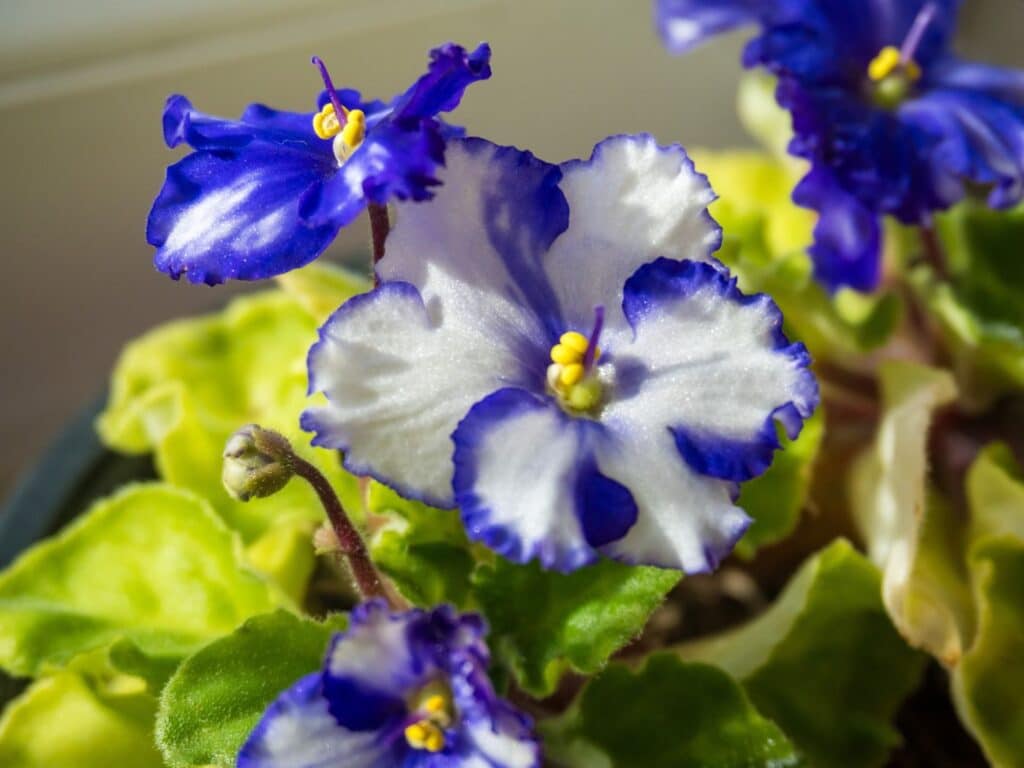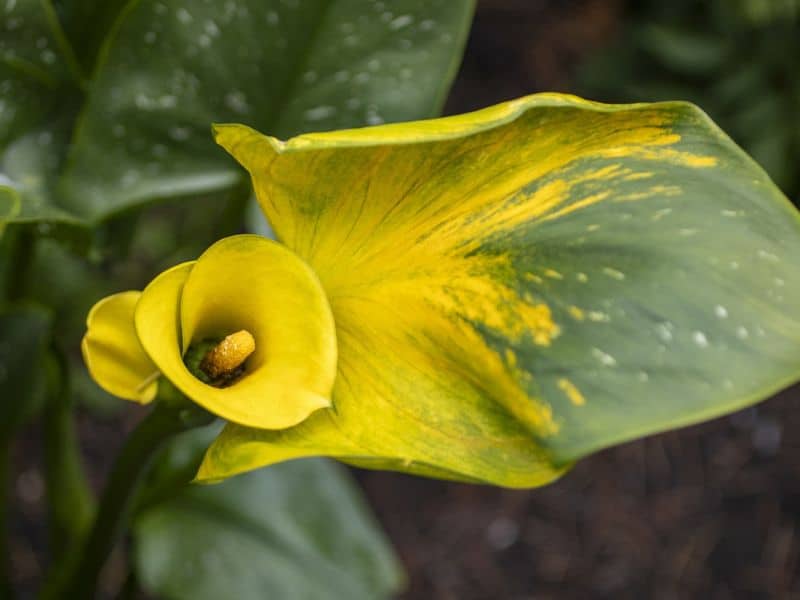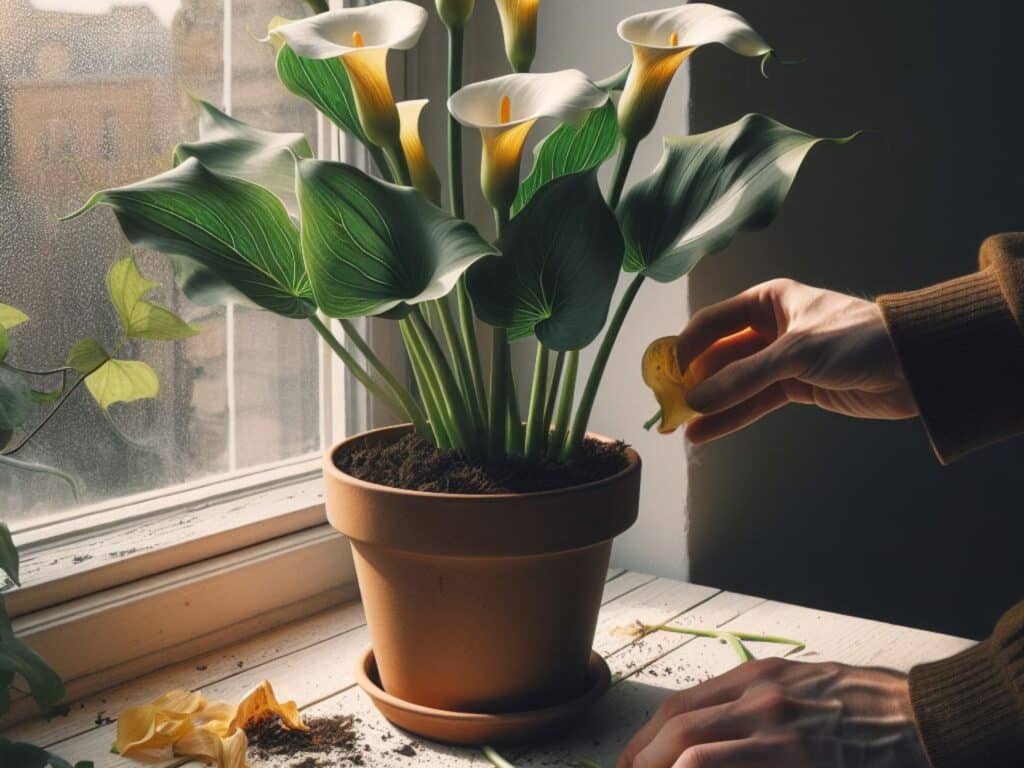Ever noticed your plants’ leaves turning yellow during flowering? You’re not alone.
This common issue can be a source of worry for many garden enthusiasts and professional horticulturists alike. But don’t fret, it’s not always a death sentence for your beloved greens.
Understanding the Yellowing of Leaves During Flowering
The Normal Growth Cycle of Plants
Understanding the yellowing of leaves during flowering starts by grasping the typical growth cycle of plants. Once sprouted, plants turn from vegetative growth to the blooming phase. It’s during this flowering period that the yellowing issue often arises. However, this color change isn’t always a sign of a problem.
The Role of Nutrients and Photosynthesis
Photosynthesis plays a pivotal role in plant growth, converting sunlight into energy for the plant’s use. In this process, nutrients like nitrogen, phosphorus, and potassium play critical roles.
A lack of these can cause leaf yellowing. That’s why providing your plants with the appropriate nutrient mix can help avoid this issue. Keep in mind, though, that even with proper nutrient intake, it’s not unusual for some yellowing to occur during the flowering stage.
Common Causes of Yellowing Leaves in Flowering Plants

Even if plants receive the right balance of nutrients, yellowing during flowering may well still happen. There are other factors at play that may have triggered the discoloration. We’re talking about common culprits such as nutrient deficiencies, watering issues, light and temperature stress, along with pests and diseases.
Nutrient Deficiencies
Nutrient imbalances play a big role in the health of your plants. For example, if your plant lacks nitrogen, it may well result in yellowing of the older leaves. Similarly, a plant struggling with potassium deficiency often shows yellowing at the leaf tip or edge. Proactively monitor the health of your plants and replenish the nutrients in the soil periodically.
Watering Issues
Wrong watering practices could be a major reason behind the yellowing leaves in your flowering plants. Overwatering robs the roots of oxygen, leading to wilting and yellowing leaves.
Conversely, underwatering can cause the plant to become dehydrated, making the leaves turn yellow as well. Always maintain the moisture levels in the soil suited to your specific type of plant.
Light and Temperature Stress
Stress due to fluctuating light and temperature conditions could also be the villain behind the yellowing leaves. Lack of sufficient light can cause leaves to yellow and drop off.
On the other side of the spectrum, too much direct sunlight could scorch the leaves and turn them yellow. Additionally, extreme heat or cold can put stress on the plant resulting in yellow leaves. Keep a check on the environmental conditions around your plant regularly.
Pests and Diseases
Last but certainly not least, pests and diseases can change the color of your plant leaves. Common pests like aphids, spider mites, and whiteflies can cause yellow spots on leaves. Fungal, bacterial, or viral diseases may well also be a reason. Regular inspections and immediate action can help you prevent this situation.
Specific Nutrient Deficiencies and Their Symptoms

Nitrogen Deficiency in Flowering Plants
Nitrogen deficiency presents commonly in flowering plants, often discernable from the yellowing of leaves. This deficiency manifests primarily in the older leaves, identifiable by a characteristic yellow hue that starts at the leaf tips and spreads along the veins.
You’ll notice these symptoms first on the lower, more mature leaves, as plants tend to transport available nitrogen towards new, growing foliage. Once identified, a correct amount of nitrogen-rich fertilizer helps restore the balance.
Potassium and Magnesium Shortages
Potassium and magnesium shortages, although less common, hold potential to cause yellowing leaves during the flowering stage. In the case of potassium deficiency, you will observe a yellowing along the leaf edges, soon followed by browning or necrosis. Discoloration due to magnesium shortage, conversely, takes on a more interveinal pattern – green veins contrasting against yellow tissue.
Introducing a potassium or magnesium-rich fertilizer helps alleviate these shortages. However, take special care as too much potassium can interfere with the plant’s ability to absorb other nutrients like magnesium and calcium.
It’s about finding the right balance to maintain a healthy, flourishing plant. Utilize proper dosage instructions on the fertilizer labels to streamline this process.
Troubleshooting Yellow Leaves During Flowering
Assessing Environmental Factors
Investigate the plant’s environment as part of the first troubleshooting steps. Check for temperature extremes, as plants may react to harsh conditions by turning their leaves yellow. For example, temperatures below 50°F or above 86°F often cause distress in most plants.
Monitor the light levels, considering that insufficient sunlight leads to yellowing. Remember, plants, such as roses, need six hours of direct sunlight daily. Also, examine the pH levels of the soil because optimal pH varies across different plants. For example, azaleas thrive in a more acidic environment with pH levels between 4.5 and 6.
Diagnosing and Treating Diseases or Pest Problems
Next, look for diseases or pests. Common diseases, such as root rot and fungal infections, cause yellowing. The rot usually turns the leaves from their healthy green hue to yellow, while fungal diseases result in yellow spots.
In contrast, pests like aphids, spider mites, and mealybugs cause yellow splotches and often leave a sticky residue.
Use organic remedies or chemical treatments targeting these specific issues. For aphid infestations, consider an insecticidal soap, but if fungal diseases plague the plant, think about a fungicidal treatment.
Adjusting Water and Nutrients
Adjust the plant’s watering and nutrient schedules finally. Plants display yellow leaves when they’re overwatered or underwatered, and it’s crucial to find the right balance. Succulents, for example, need infrequent watering, while ferns require consistent moisture.
Reevaluate the nutrients provided to the plant. Too much or too less of certain nutrients like nitrogen, phosphorus, and potassium (as discussed in the previous segment) could potentially lead to a yellow hue.
Consult a garden center or local extension service to get a soil test done if you suspect nutrient imbalances, and adjust the feeding regimen accordingly. The right nutrient mix can drastically improve your plant’s health, turning those yellow leaves back to a vibrant green.
Preventative Measures and Best Practices
Regular Monitoring and Maintenance
In avoiding yellow leaves during flowering, consistent observation becomes your primary defense. Keep a close watch on your plants, particularly during flowering, spotting signs of stress early.
Yellowing on the lower leaves typically signals nutrient deficiency. Conversely, patchy yellow spots may indicate a pest problem. By identifying issues promptly, you’re one step closer to restoring your plant’s health.
Soil Quality and Fertilization Techniques
A healthy soil guarantees a healthy plant. Opt for a quality mix, rich in organic matter for your flowering plants. A soil test can reveal deficiencies, allowing you to adjust the nutrient levels accordingly.
In case of a nutrient imbalance, a slow-release, automated fertilization system may well prove beneficial. Remember, each type of plant has its nutrient preferences. Hence, familiarize yourself with these, adjust your fertilization technique, and you’re bound to witness lush, green leaves.
Adequate Watering and Lighting Strategies
Proper watering and lighting play pivotal roles in maintaining vibrant foliage. Over watering or under watering can lead to yellowing leaves. Therefore, find a balance to fulfill your plant’s water requirements. Lighting, too, holds equal importance.
Depending on the plant species, provide exposure to adequate sunlight, neither too harsh nor too little. In indoor settings, use grow lights to mimic natural sun. Combining apt watering with proper lighting strategies shall maintain your plant’s flourishing green aura.
FAQs
What causes the yellowing of leaves in flowering plants?
The yellowing of leaves in flowering plants is often due to nutrient deficiencies, notably nitrogen, phosphorus, and potassium. Additionally, other factors like environmental conditions, diseases, and pests can contribute to this issue.
How can you identify specific nutrient deficiencies?
Each nutrient deficiency presents specific symptoms during flowering. Nitrogen deficiency often results in uniformly yellow leaves, whereas phosphorus and potassium deficiencies can cause red or purple discoloration and even necrosis.
How can you prevent leaves from turning yellow?
To prevent leaves from turning yellow, it’s crucial to maintain a proper nutrient and watering schedule, ensure suitable environmental conditions, and regularly check for diseases or pests. Regular soil testing and adjusting feeding regimens based on the results can significantly improve plant health.
What are vital preventative measures for maintaining healthy plants during flowering?
Key preventative measures include regular monitoring, maintaining optimal soil quality, and applying appropriate fertilization techniques. Also, proper watering and lighting strategies are vital to preventing yellow leaves and ensuring lush, green foliage during flowering.
How important is consulting with an expert for soil testing?
Getting soil tested by experts is crucial as it provides an understanding of its composition and nutrient levels. Experts can then provide advice on adjusting the feeding regimen of plants to promote health and prevent leaf yellowing.
See more:







